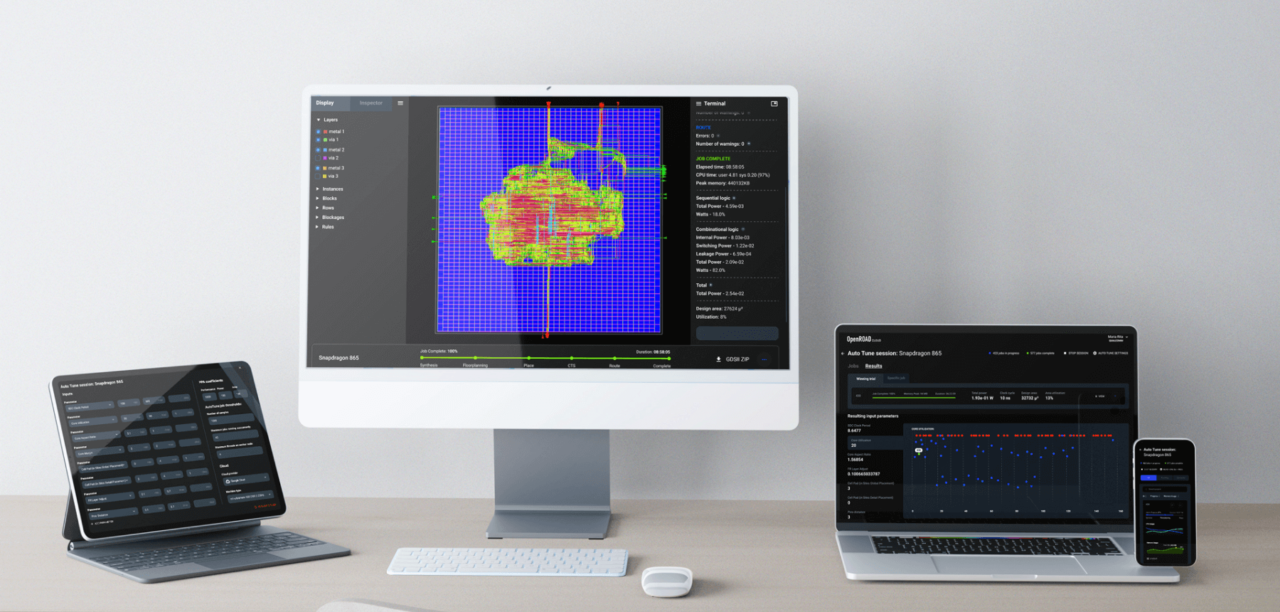
Case StudyDemocratizing chip design: Transforming EDA into a scalable cloud SaaS
Challenge
Electronic Design Automation (EDA) tools are essential for designing custom silicon, but commercial solutions are traditionally expensive, complex, and built with legacy UX assumptions. Smaller companies, unable to justify the cost or training overhead, often default to more expensive, less optimized alternatives like FPGAs.
OpenROAD, an open-source project out of UC San Diego, offered a powerful RTL-to-GDSII tool, but it was originally designed for local installations on a single machine—limiting adoption among companies without internal hardware infrastructure or Linux expertise.
Solution
Planorama Design collaborated with the OpenROAD team to transform their standalone tool into a modern, cloud-native SaaS platform—OpenROAD Cloud—designed for scalability, accessibility, and ease of use. Key components included:
- Enterprise SaaS UX Redesign: We reimagined the UI for a broad audience, reducing the learning curve and eliminating the need for vendor-led training. Users could configure and launch design jobs with tailored power, performance, and area (PPA) constraints—all through a clean, responsive browser interface.
- Device-Agnostic Access: The platform supports real-time project monitoring and control from desktops, tablets, or mobile devices, so engineers can manage jobs on the go—even outside traditional work settings.
- Cloud-Scale Architecture: We architected the solution for both public and private cloud deployment using containerization and microservices. This allowed for elastic scaling and usage-based cost control, aligning with modern enterprise infrastructure standards.
- Auto-Tuning for Optimal Results: Leveraging academic research from the original OpenROAD tool, we designed a constraint auto-tuning capability that runs parallel cloud jobs to identify optimal chip design configurations with minimal user input.
Outcome
OpenROAD Cloud unlocked a new market of semiconductor innovation by lowering barriers to entry for custom ASIC design:
- Expanded Market Reach: Previously underserved startups and smaller teams could now design ASICs without large capital investments in EDA software or compute infrastructure.
- Accelerated User Onboarding: The intuitive UX removed the need for training-intensive onboarding, enabling teams to begin designing immediately.
- Anywhere Access: Engineers can monitor and manage their hardware design jobs from any device, improving productivity and flexibility.
- Cloud Efficiency & Scale: The elastic infrastructure reduces costs for users while simplifying deployment for enterprise IT teams. Optional private cloud support addresses security and compliance requirements.
- Strategic Differentiation: OpenROAD Cloud could be a premium, accessible alternative to high-cost commercial tools or FPGAs, giving companies more control over cost, performance, and custom silicon innovation.
Planorama Design’s expertise in SaaS UX and scalable architecture helped elevate OpenROAD from a research project to a commercially viable cloud product—making advanced chip design accessible to more innovators than ever before.


